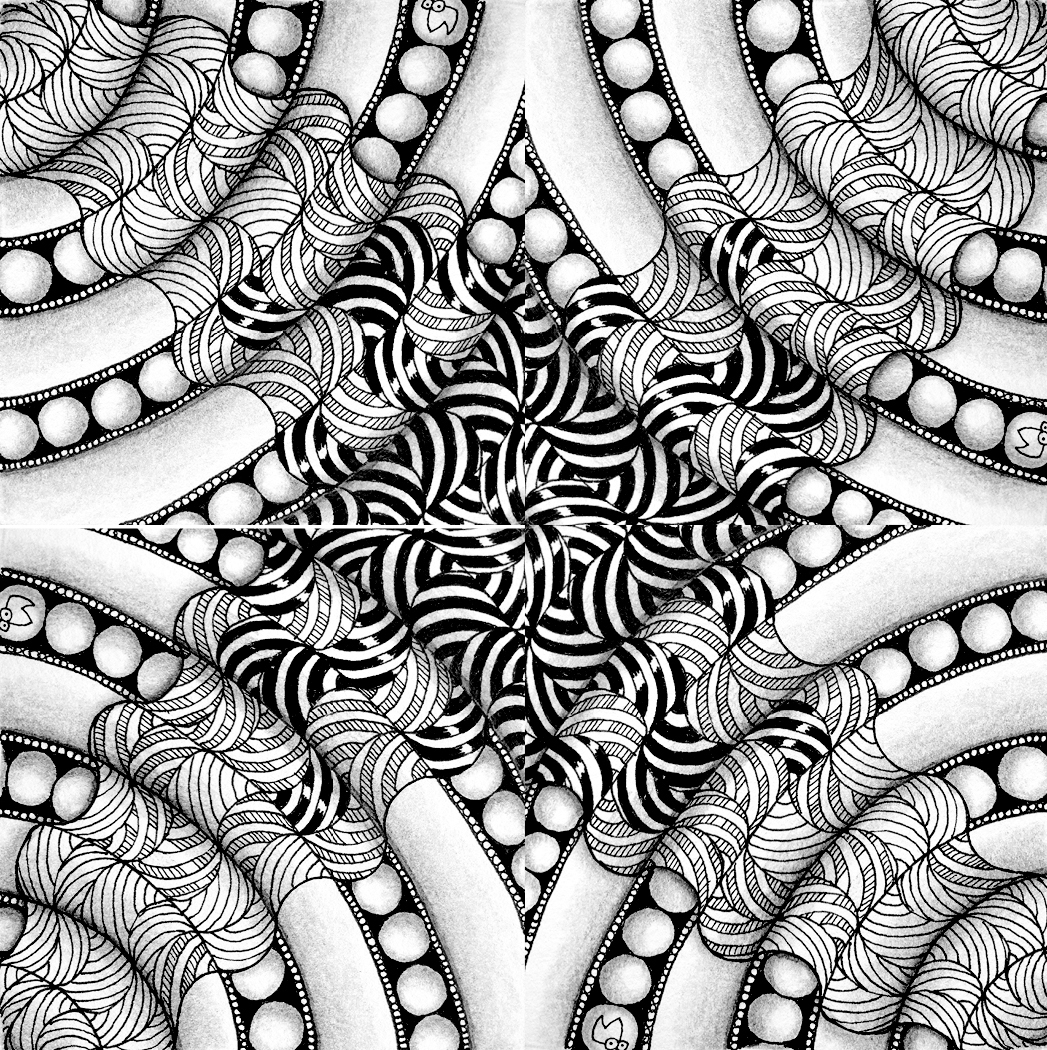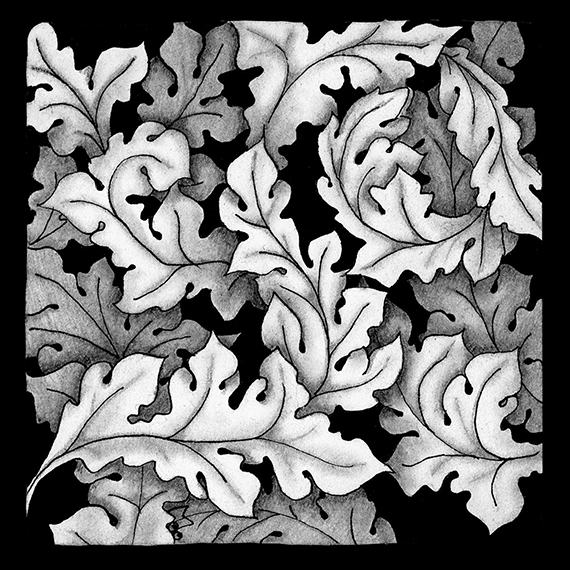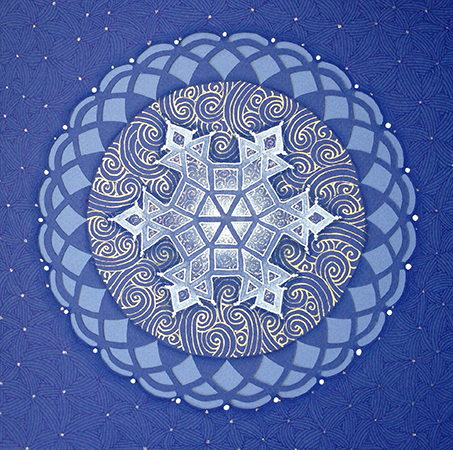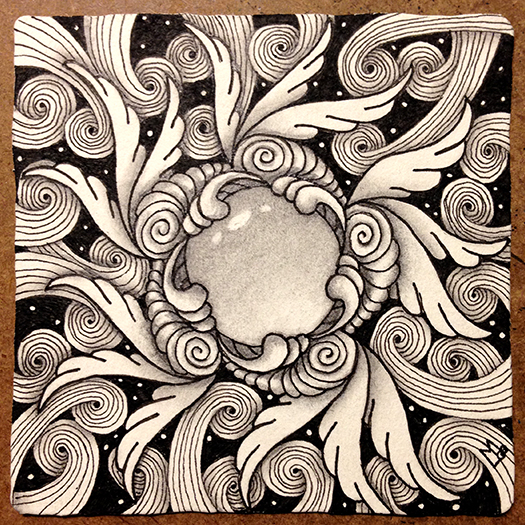
I’ve been wanting to share the technique of TransluZENce and this week’s Square One Purely Zentangle focus, Membranart by Tomas Padros (step-outs found here), has given me the chance to do so. TransluZENce is a cousin to TranZENding, a technique recently introduced in a Kitchen Table Tangles (KTT) video by Rick and Maria on the Zentangle Mosaic app. While TranZENding is based on drawing one tangle on top of another and then using white to highlight and graphite to shade, TransluZENce is based on drawing behind and then using graphite to make it look like you are viewing the background through a translucent media like tissue paper or frosted glass.
I decided to create an example using Membranart and Hollibaugh as everyone is familiar with the draw behind aspect of Hollibaugh. Instead of Membranart appearing opaque it appears translucent, giving a glimps of what lays behind.

Here is how this illusion is created…

With your pen, start Membranart as normal.

Again with your pen and using the principle of drawing behind add Hollibaugh in the background.

Using a pencil on top of Membranart, connect up the lines of Hollibaugh that would normally be hidden.

Using your pen, fill black in the areas between the Hollibaugh lines in the background.
NOTE: this technique will be more effective if you use high contrast tangles in the background.

Now, to make Membranart look translucent, use your pencil to lightly and evenly add graphite to the spaces between Hollibaugh on top of Membranart. Smooth out the graphite using a tortillon or paper stump.

Finish the tile with shading to create 3D and layering effects.
Here is another example using Membranart (makes me think of something spilled on the kitchen floor.

And another example I did using Puffin and Showgirl back in June, 2017.

As is usual, if you would like to try anything in this post in your own work please feel free to do so. If you post your work, please use the hashtags #transluzence or #transluzent where they are allowed and let people know about this post. Many thanks.
Blessings,
Lynn

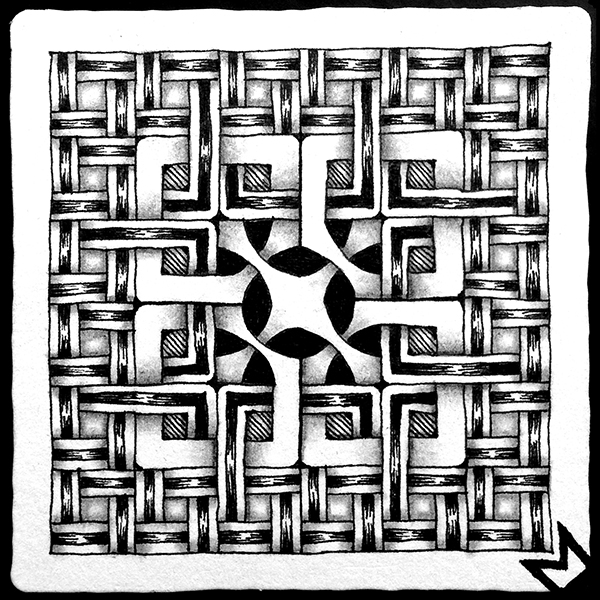








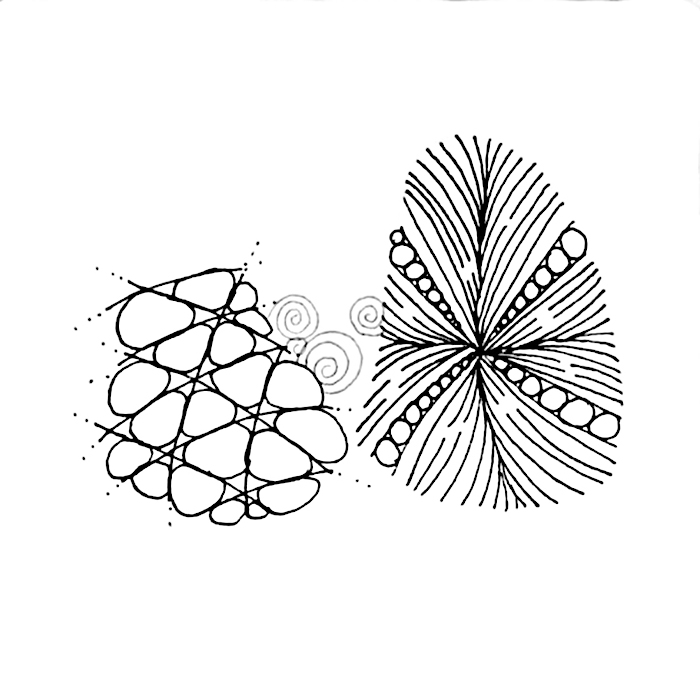








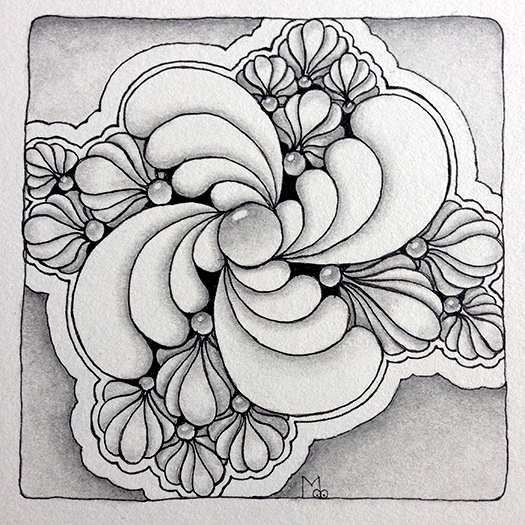










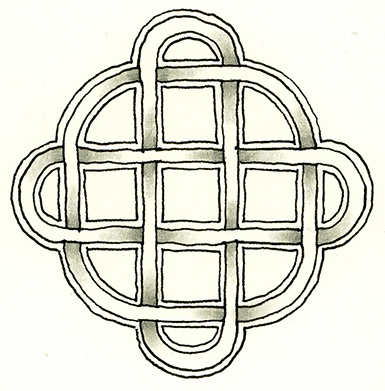




 Then add rounded triangle and semi circle shapes as shown.
Then add rounded triangle and semi circle shapes as shown.

















